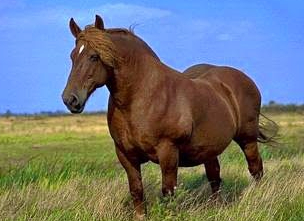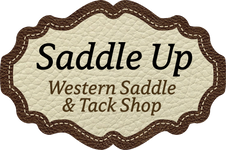Horse Body Scoring - Keeping Your Horse Happy and Healthy
Posted by Lynnsy Johnson - Saddle Up on Oct 11th 2019
The body scoring system was created in the 1980's at Texas A&M University. It was designed to track a horse's body weight and make sure it was getting the right amount of food. It also allows us to take a closer look at the body fat being stored and helps analyze horse's gaining fat or losing fat all by feel and sight. When checking out a horse, the main focus is over the ribs, over the withers, behind the shoulder, around the tail head, the back, and the neck.
It's very important to keep track of your horse's weight, especially during the winters months. It is also crucial that you not only look at your horse, but feel around their body too. Winter hair can be very deceiving because it makes them look fluffier than they really are. It can be even harder with horses that live in colder climates because their hair grows longer and thicker than a horse who is in a moderate climate. A horse can appear to be at a healthy weight, but it's actually thin. You need to feel the horse, especially over the ribcage. If you can feel bones easily, you may want to up your feeding ration for that horse.
If you consistently follow the scoring chart, you can keep up with your horse's condition and make sure they are getting all the nutrition they need.
Let's go over each body score:
1-2 Extremely Thin to Very Thin: This is a very dangerous score for a horse to be at. In most cases, horses that are neglected or rescued from animal abuse situations are at this point. This horse would be very emaciated ad have little to no fat on the body. You would easily be able to see bones and even individual vertebrae.
3 Thin: At this point the horse is thin, but not as bad as the previous score. They won't be as boney and will have minor fat over their ribs.
4 Moderately Thin: At this score, you will be able to feel the edge of the ribs and spinal column, but fat will be visible over the tail.
5 Moderate: Now you will be able to feel ribs, but not see them. You will not be able to feel the spinal column, which is a good sign! As you go over the horse, it will feel pretty much the same all over the body with this score.
6 Moderately Fleshy: The fat on the horse will start to feel spongy and there will be quite a bit of fat on the withers as well.
7 Fleshy: There will be fat between each rib at this point.
8 Fat: The fat is starting to pile up alongside the spine at this score. Fat can also be felt and seen between the butt.
9 Extremely Fat: This is when a horse is extremely overweight and may need to go on a diet. There will be a lot of bulging fat and the flanks will be almost completely filled in.
Keeping your horse at a healthy weight is very important. It isn't good for a horse to be skinny, but it's not good for them to be overly fat either. Each horse has an ideal weight and each horse is different. They are just like people and are all built differently. Some horses are easy keepers and others are harder keepers. You know your horse the best, so just checking them occasionally is a good idea. If you are ever concerned about their weight, always reach out to your vet first and get a good game plan. We hope you find this information helpful!

(picture credit: https://horsewisdomblog.com/2017/11/10/heavyweight-should-not-mean-overweight/)
